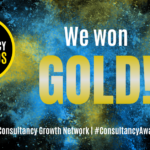It’s a fact that many billions of dollars are spent globally every year on market research. By any measure, it’s also a fact that, due to new CPG innovation challenges, the vast majority of innovations fail by the time they reach the market.
How can this be?
We spoke to Phil Norminton, Catalyx’s new COO, to uncover why things aren’t working as they should at all points in the product development journey. Phil has spent a career driving business impact in CPG from data and insight, operating both agency side and client side in a variety of insight, customer strategy, commercial and leadership roles. Bringing his innovation and scaling expertise to Catalyx, Phil joins the team with a fantastic perspective on the biggest challenges for clients to solve.
Read on as we explore the importance of consumer-centric research.

From client-side to agency-side, what stands out today about CPG innovation?
I’ve spent years around CPG innovation and it’s pretty evident that there’s a lot of waste here. That can come from a lack of strategic clarity; why are we innovating? What’s the business job to be done? What’s the job consumers want us to do such that they’ll adopt a new solution? Furthermore, apart from the approximately 5% of innovations that are truly groundbreaking, several factors contribute to systemic low ROI. These factors include the rapid pace of business, the pressure to maintain a sales calendar, the swift transition to new projects, and a lack of cohesion in strategy and insight throughout the process.
Innovation also feels like the poor cousin of media – how many companies develop their own creative to test versus write their own product concepts? How much investment and vendor innovation goes into planning, measuring and optimising media effectiveness, versus innovation? With that in mind, we collectively have a significant opportunity to make businesses more efficient, reduce friction, and enhance consumer satisfaction.
“I believe it can be more streamlined, connected and considered, more led by consumer tensions, needs, expectations and experiences.”
Finally, as laid out in this blog from our CEO, Guy White, we’ve seen major CPG companies struggle to grow volume share as they’ve pulled revenue and cost optimisation levers in recent years. This has driven profit margins, but there’s little runway left so there will be an increasing requirement to consider both the role and ROI of innovation.
Where are some of the common pain points in the front-end of the innovation discovery and development process?
I’ve seen a lot of clients commission foundational segmentation work to surface demand space opportunities, and then struggle to leap to innovation platforms from that. Key consumer tensions, unmet needs (whether they’re functional or emotional) and associations, are not always well-understood and made central to the discovery process. As a result, you often see too-rapid a move into creative ideation workshops and concept testing, meaning strategy definition and execution are developed and tested almost simultaneously. So, often good strategies can get binned as a result of poor articulation – or the creative process lacks an objective thread. That can lead to the challenge of repetition – either repeated testing within a project, or lack of application or knowledge of previous learnings.
Post-launch, we don’t ask often enough why it did – or didn’t – resonate with consumers, how incremental it was, and what can be learned. In fact, sometimes the new product innovation lever might not be the lowest hanging fruit for brand growth. Holistically understanding barriers to greater physical and mental availability of previous innovations can highlight the need for adjustments for example in packaging, communications, flavour/scent profile or ‘findability’ in-store, that can offer bigger returns.
“The industry has focused on taking cost out of the process, not innovating it, so waste remains.”
When you look at it, there’s a lot of pain points throughout the whole process, and that’s without touching on forecasting and communications! I believe it can be more streamlined, connected and considered, more led by consumer tensions, needs, expectations and experiences of product solutions and brands, and more right-sized for the business job to be done.
It seems that innovations in researching this space have responded to the need for ‘faster and cheaper’ – is that missing the point?
There’s absolutely a place for making existing processes more efficient, and right-sizing the investment to the likely return. I think we’re still on a journey in regards to the adoption of DIY platforms, but when the stakes are lower and the foundational work is in place, it’s sensible to minimise discovery and concept development costs. Whether that means a DIY solution in those instances, or innovation in the business process that means a serviced approach is more attractive, is where I think some future opportunities and developments lie.

Can you explain more about that opportunity?
My hunch is that from an innovation perspective, the pain points are less in concept testing methodologies and tools, but more in the discovery, definition and concept construction steps that can be missed in the run up to that. I’d be concerned with what is getting created and tested in DIY mode. In other words, the industry has focused on taking cost out of the process, not innovating it, so waste remains.
“What’s brilliant, and dare I say unique, about Catalyx, is that we have a micro-obsession with making sure that research data is a means to an end…”
So, what is Catalyx doing differently?
Catalyx has set out to revolutionise the solution. For me it’s been very much a meeting of minds in terms of the challenges and opportunities the CPG innovation space presents, and what it will take for a consulting company to play a meaningful role in addressing them.
For example, Catalyx takes a consulting outcome-focused approach, but one which is grounded in crowd-sourced consumer data – the sparky mixed-method research that gets at addressing the pain points; be that discovering unmet needs to form innovation platforms with, determining the ‘building blocks’ or recipe card to write concepts or communications briefs from, or more behavioural ways of understanding concept resonance and likely incrementality.
What’s brilliant, and dare I say unique, about Catalyx, is that we have a micro-obsession with making sure that research data is a means to an end; the end being that the client is discovering something new, and we’re making feasible recommendations that have an impact on the bottom line. The team have developed impressive ways of working and personal standards to ensure we deliver on this promise.
Added to that, we’ve got a super client base for whom, at last count, we’ve unlocked a Billion Dollars of growth for. We’ve got a team who are incredibly passionate about solving their problems. It’s this blend of talent, crowd, services and technology that actually starts to tackle this industry-wide problem, and gets me really excited for what’s ahead.
–
Connect with Phil and stay up to date with expert news and views via his LinkedIn.
(Independent research conducted by Catalyx)






